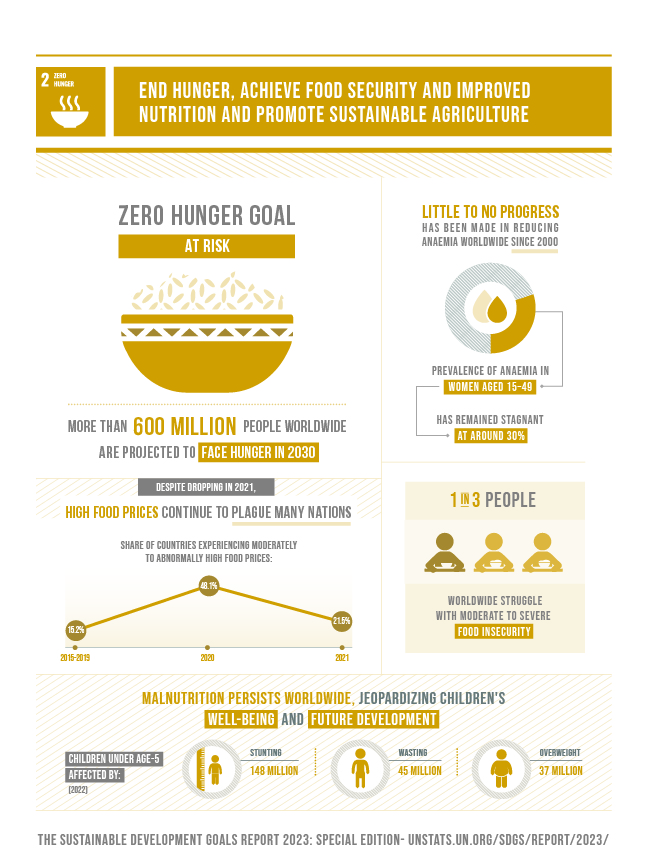End hunger, achieve food security and improved nutrition, and promote sustainable agriculture
SDG 2 is centered on addressing hunger on a global scale. The goal aims to achieve food security by ensuring that all individuals have access to sufficient, safe, and nutritious food. It seeks to improve nutrition and promote sustainable agricultural practices to guarantee a steady and equitable food supply for everyone, with a particular focus on vulnerable populations.

- By 2030, eradicate hunger and ensure year-round access to safe, nutritious food for all, especially the poor and vulnerable, including infants.
- End all forms of malnutrition by 2030, meeting internationally agreed targets on stunting and wasting in children under 5 by 2025, and address nutritional needs of adolescent girls, pregnant and lactating women, and older persons.
- Double agricultural productivity and incomes of small-scale food producers, particularly women, indigenous peoples, family farmers, pastoralists, and fishers, by 2030, ensuring equal access to resources, knowledge, and opportunities.
- Ensure sustainable food production systems and resilient agricultural practices by 2030, enhancing productivity, adapting to climate change, and improving land and soil quality.
- Maintain genetic diversity of seeds, plants, and animals by 2020, promoting access to benefits from genetic resources and traditional knowledge.
- Increase investment in rural infrastructure, agricultural research, technology development, and gene banks to enhance agricultural capacity in developing countries, especially least developed ones.
- Correct and prevent trade restrictions and distortions in agricultural markets by eliminating export subsidies and measures with equivalent effect, aligning with the Doha Development Round.
- Adopt measures for proper functioning of food commodity markets, including timely access to market information, to limit extreme food price volatility.